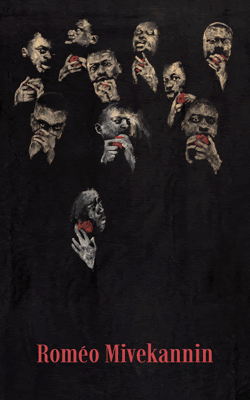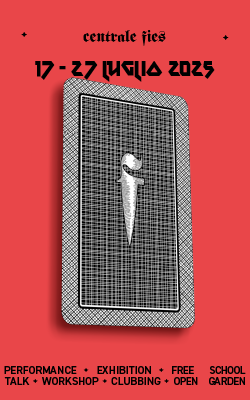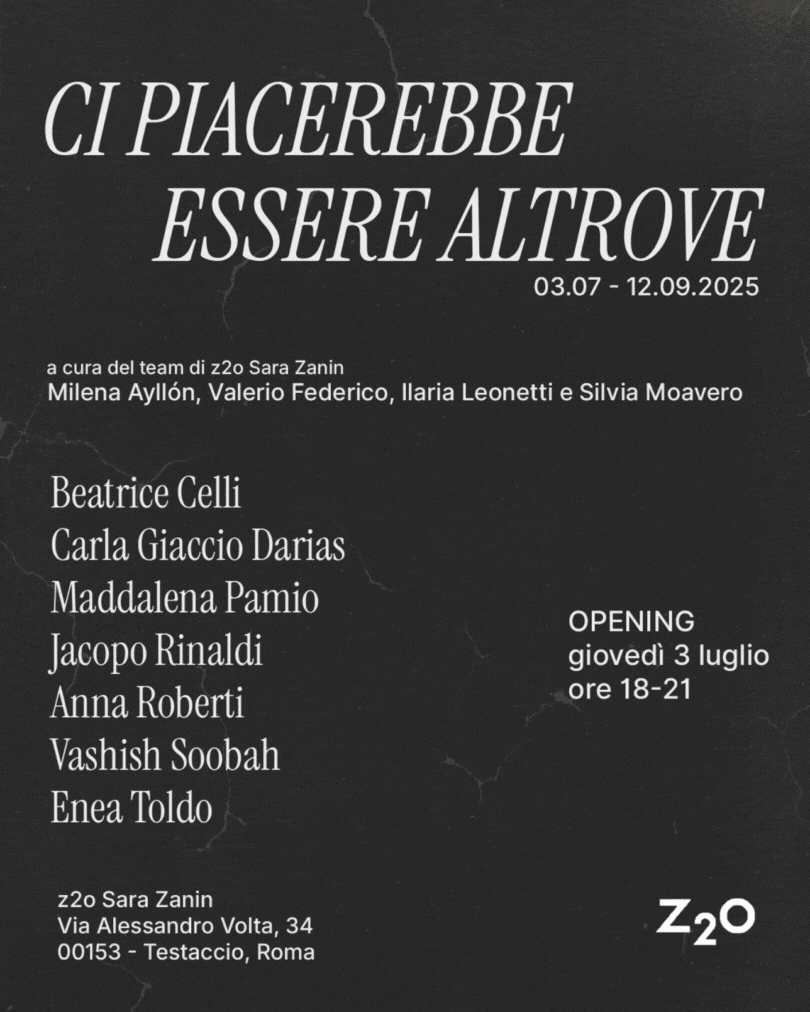
English text below
Per la sua prima personale in un’istituzione italiana, l’artista coreana Haegue Yang presenta Tightrope Walking and Its Wordless Shadow – a cura di Bruna Roccasalva e promossa da Fondazione Furla e dalla Triennale di Milano -, una mostra che raccoglie un’ampia gamma di mezzi espressivi: collage, video, sculture performative e grandi installazioni.
Ospitata in Triennale fino al 4 novembre 2018, la personale si sviluppa in tre ambienti, articolandosi tra lavori particolarmente significativi a nuove produzioni che coprono un percorso professionale di quasi ventanni.
Nella sua ricerca, il cui centro ruota attorno al concetto di “inesprimibile”, molti sono gli elementi ricorsivi: l’interesse per l’astrazione e la geometria; il movimento e la performatività; la relazione tra “piegare” e “dispiegare”, che l’artista esplora come pratiche interconnesse.
Nell’intervista che segue, la curatrice Bruna Roccasalva ci chiarisce e racconta molte scelte compiute dell’artista, a partire dal titolo, che evoca l’immagine affascinate del funambolo, figura metaforica perfetta per narrare le vicende dell’artista.
ATP: Il titolo della mostra – Tightrope Walking and Its Wordless Shadow – ci rimanda a un’immagine molto poetica: il mondo dei funamboli. Mi racconti se l’artista ha scelto questo titolo per il suo valore metaforico? Quale significato emerge in relazione alla mostra?
Bruna Roccasalva: I titoli delle mostre di Haegue Yang sono molto ponderati… poetici, complessi, a volte enigmatici. Sempre evocativi, come anche in questo caso. Quella del funambolo è una figura affascinante, che ha ispirato scrittori e artisti di ogni tempo e che evoca sentimenti contrastanti, come l’audacia da una parte e la fragilità dall’altra, l’equilibrio e la caduta. Ma soprattutto trasmette un sentimento di costante tensione, che rimanda all’idea di potenzialità … del linguaggio, dell’opera, del fare artistico.
ATP: L’immagine del funambolo è stata utilizzata, nel testo di presentazione della mostra, per raccontare la tensione intrinseca alla volontà di esprimere l’inesprimibile. Come ha tentato l’artista di dare voce all’inesprimibile mediante la sua ricerca?
BR: Attraverso un processo costante di scoperta, appropriazione e riconfigurazione, in cui l’incontro casuale con un materiale, un oggetto, sia industriale o artigianale, con un personaggio o una storia può generare forme e narrazioni ogni volta nuove e inaspettate.

ATP: La mostra è stata strutturata in tre ambienti. Quale ragione motiva questa tripartizione?
BR: La suddivisione in tre ambienti è nata in modo del tutto spontaneo in accordo con la selezione dei lavori e la volontà di costruire attraverso il loro concatenarsi un percorso che accompagna il visitatore in modo graduale all’interno del lavoro di Haegue Yang. Partendo da una sorta di introduzione sottile a quelli che sono i temi principali della sua ricerca, con opere iniziali che anticipano e chiariscono i meccanismi che informano tutto il suo lavoro successivo, si arriva a un’esperienza immersiva, in cui questi meccanismi diventano più espliciti ed evidenti. Un percorso per gradi, come dicevo, contraddistinto anche da una sorta di crescendo che passa dal silenzio al clamore, da un approccio severo e minimalista a uno esuberante e barocco, i due estremi tra cui si muove tutto il lavoro di Yang.
ATP: Uno dei fulcri della ricerca di Haegue Yang è quello legato alla complessità della geometria e alle forme di astrazione. Mi introduci alcune installazioni presenti in mostra che, più di altre, manifestano la molteplice investigazioni dell’artista non solo sulle forme, ma anche sui materiali utilizzati?
BR: Gli esempi potrebbero essere diversi perché Haegue Yang è un’instancabile sperimentatrice capace di ripetersi rinnovandosi ogni volta. I suoi lavori sono composizioni astratte in cui ritornano talvolta gli stessi materiali rielaborati in forme diverse o gli stessi temi formalizzati attraverso materiali differenti.
Ad esempio un lavoro come 134.9 m³ dalla serie Thread Installation, attraverso una sequenza di semplici fili di cotone rosso, crea una barriera quasi invisibile che isola un angolo della sala e ne preclude l’accesso. Questa barriera “permeabile e trasparente”, così come la spazialità di natura ambivalente – accessibile e inaccessibile – che genera, torna nei lavori successivi con le veneziane, in una forma quindi del tutto nuova e attraverso l’impiego di un materiale ugualmente d’uso comune, ma di natura profondamente diversa.
ATP: Nell’opera “Science of Communication #1 – A Study on How to Make Myself Understood” del 2000, l’artista da voce al proprio vissuto, in particolare, alla difficoltà che ha incontrato nel relazionarsi a delle persone che si esprimevano in una lingua diversa dalla sua. Mi racconti meglio come ha espresso, nell’opera citata, questo disagio?
BR: “Science of Communication #1 – A Study on How to Make Myself Understood” appartiene a una serie di opere iniziali che hanno a che fare con le nozioni di testo, scrittura e traduzione. Si tratta di lavori che esprimono il confrontarsi di Haegue Yang con le problematiche del linguaggio all’interno dei processi di integrazione culturale e sociale, a partire dalla sua esperienza personale di Coreana che vive in Germania. In questo lavoro – che consiste in un testo su formato A3 – Yang racconta della sua quotidiana difficoltà a tradurre il proprio pensiero in una lingua straniera, della sensazione di disagio per l’impossibilità di esprimere completamente se stessa o di capire fino in fondo l’altro, del costante senso di isolamento, insicurezza e incompletezza. Il testo era stato inizialmente scritto dall’artista in una commistione indecifrabile di lingue e poi tradotto in inglese e editato da un traduttore professionista in modo da essere comprensibile per il pubblico. E il senso del lavoro sta proprio in questo processo di traduzione perché, come afferma Yang stessa nel testo, non si tratta di una confessione ma di un tentativo di comunicare se stessa attraverso un esperimento di traducibilità.

ATP: Le due sculture performative della serie “Dress Vehicles”, danno voce ad una particolare significato che l’artista attribuisce alla danza. Mi racconti queste sculture performative e il loro significato?
BR: I Dress Vehicles in mostra sono la nuova generazione di una serie di sculture performative iniziata nel 2011, articolate strutture metalliche su cui si innestano materiali di diversa natura – come tende alla veneziana, macramè, campanelle. Queste opere si muovono nello spazio se attivate da performer che inserendosi al loro interno le “indossa” come un vestito, e le muove come un veicolo. Sono come dei “gusci” che imprigionano il corpo o delle “maschere” che danno a chi le indossa una diversa identità.
Il loro rapporto con la danza va al di là del fatto che muovendosi sembrano ballare all’interno dello spazio. E’ un legame che sta all’origine stessa di questi lavori, ispirati infatti alle “Danze Sacre” dello spiritualista russo Georges I. Gurdjieff e il “Triadic Ballet” di Oskar Schlemmer, e a un’idea di danza come forma di espressione complessa che mette insieme impulsi non solo fisici, ma spirituali, ritualistici, sociali e politici. I movimenti consentiti dai Dress Vehicles sono semplici e soprattutto limitati, puoi andare in avanti e indietro, non puoi fare molto altro, ma il gesto di spingerli ti dà allo stesso tempo una sensazione di sopraffazione e di potenza, e ti fa sentire il “peso” stesso della danza.
ATP: La mostra sembra avere una sorta di ‘apoteosi’ nell’opera Cittadella (2001): una complessa macchina scenica che avvolge, in modo multi-sensoriale, il visitatore. Come l’hai vissuta/attraversata nel ruolo di curatrice?
BR: Questo lavoro fa parte di una serie molto rappresentativa di installazioni iniziata nel 2006 in cui un materiale di uso comune come le tende alla veneziana viene impiegato per creare composizioni dalle infinite possibilità combinatorie, accompagnate spesso da elementi come ventilatori, umidificatori, profumatori e radiatori a infrarossi. Cittadella è una delle più estese e articolate installazioni di questa serie, un ambiente ipnotico in cui tutti i cinque sensi sono stimolati. Riuscire a includerla nella mostra non è stato semplice, per la sua monumentalità e complessità appunto, ma l’ho voluto fortemente perché attraversarla vuol dire esperire e condividere una pluralità di percorsi emotivi e sensoriali che credo possano offrire allo spettatore un’esperienza molto diretta del lavoro di Hague Yang.

FURLA SERIES #02
HAEGUE YANG: TIGHTROPE WALKING AND ITS WORDLESS SHADOW
curated by Bruna Roccasalva
organized by Fondazione Furla and La Triennale di Milano
Triennale di Milano
September 7 – November 4, 2018
La Triennale di Milano and Fondazione Furla present Haegue Yang: Tightrope Walking and Its Wordless Shadow, an exhibition curated by Bruna Roccasalva and organized by Fondazione Furla and La Triennale di Milano.
Tightrope Walking and Its Wordless Shadow, which marks Yang’s first institutional solo show in Italy, will explore the vast array of media employed by the artist, ranging from paper collage, video essays, and performative sculptures to large-scale installations. Yang’s spectrum of allusions and visions walks a thin line between social inquiry and history, personal life and collective memory, yielding imagery and experiences of enormous evocative power, in which objects, figures, and places are inextricably linked.
Tightrope Walking and Its Wordless Shadow unfolds through three rooms where landmark works are combined with ambitious new commissions to highlight recurring themes in the artist’s career: abstraction and geometry, movement and performativity, and the interlocked dynamics of folding and unfolding. Yang explores all of these as interwoven entities in a selection of pieces that represent key stages in her oeuvre, from 2000 up to her most recent works. It also points to her deep engagement with the unspoken: the urge to create a language whose potentiality is like a tightrope walk, where each move is powerfully dynamic and charged with both emotional and perceptual tension.
Ushering us into the show, the first room introduces two subtle and sensitive installations: Thread Installation, 134.9 m³ (2000-2018) and Chalk Line Drawing, 81 m² (2002-2018). Though rarely shown, these series are regarded as seminal. 134.9 m³ is an almost invisible barrier of red cotton thread—stretched between two walls at ten-centimeter intervals and imperceptibly slanted at an angle of exactly one degree—which isolate and block off one corner of the room. Their pattern seems to continue on the walls behind them in 81 m²: a sequence of straight lines drawn in red chalk, which visually merge with the threads, creating an optical effect of subtle movement.
The series Thread Installations and Chalk Line Drawings are always titled with the surface area or volume of space that they occupy in a given presentation. They are considered to contain the seed of aspects central to her later work: from her interest in geometry and her use of everyday materials, to her penchant for creating an ambivalent space between the conceptual and the perceptual, while simultaneously oscillating between the accessible and inaccessible.
Locked within the space marked off by these two installations is another of the artist’s early works, Science of Communication #1 – A Study on How to Make Myself Understood (2000), on a single sheet of A3 paper, which addresses the artist’s lasting concerns and struggle with language in the sphere of cultural and social integration. Her incomprehensible notes, in a mixture of various languages, were subsequently edited and translated into English by a professional translator. The original version, which was born as a string of unintelligible personal thoughts, unfit to be shared, was eventually put into fathomable form. Here, the artist’s biography plays a role—in 1994 she moved to Germany from her native Korea to study in Frankfurt, and the impediments faced in expressing her mind or thoughts in a foreign language became a severe struggle on a daily basis. The processes involved in Science of Communication #1 – A Study on How to Make Myself Understood, with their mediation of the other, express the artist’s inability, dependency, and vulnerability. The piece extends this reflection to include the greater difficulty, or even impossibility, of conveying one’s inner life through language.
This sense of incommunicability also echoes through Mirror Series – Back (2006), an oval mirror hung with its reflective side to the wall, as if turning its back on the viewer and removing itself from the world. It hints at the conscious negation of a given role, and an active refusal of conventional modes of behavior. Mirror Series – Back belongs to a group of six works (Mirror Series, 2006-2007). Each of them explores a polite rejection of the expected function of reflecting what is in front of it. Mirror Series exemplifies Yang’s evident approach to figuration: her works allude to the human figure without ever directly portraying it—sometimes, as in this case, by pointing to its absence.
From the “permeable and transparent barrier” of 134.9 m³, we move on to Cittadella (2011), the monumental installation of 176 venetian blinds that constitutes the deep yet penetrable center of the exhibition. Visitors move through this multisensory environment of intricate modular structures accompanied by a hypnotizing choreography of light, while various scents that allude to an “elsewhere” drift through the space. The title (“Citadel”) evokes an impenetrable fortress, but the inviolable nature of this structure is in fact a partial illusion. Its walls, made of slats with rays of light seeping through them, are permeable to the gaze, and the openings in the geometrical outline of the structure invite viewers to walk into and through it.
After this evocative, immersive, dim environment comes a large, bright, open space that feels like a ballroom, its walls ornamented by a mural-like piece from the ever-evolving graphic seriesTrustworthies (ongoing since 2010). In the artist’s major work cycle, Yang combines different graphic materials, such as patterned envelopes, her own custom-printed graph paper (Grid Blocs, ongoing since 2000), motifs of technical devices and natural imagery, as well as reflective vinyl film. The series originated with the artist’s chance discovery of the amazing variety of the security patterns printed inside envelopes to keep their contents confidential. Focusing on the aesthetic potential of these patterns, Yang began collaging them into geometric compositions: abstract landscapes of simple horizontal lines, at first, which over time have grown into increasingly complex compositions—waves, refractions, windmills, x-shaped or interwoven forms, and kaleidoscopes—incorporating a wide range of materials, like origami paper, sandpaper, holographic paper, and graph paper, even emerging from their frames to cover the entire wall, as in the piece on view. Today, Trustworthies has become a tool for Yang to create a complex environment for sculptural works. Similar to her collaborative wallpaper series, Trustworthiesmodifies the surrounding walls to transform a space into a place in which the full habitus of things can unfold.
The fanciful figures and narratives that unfold across the walls of the room serve as a backdrop for the “dance” of two newly conceived performative sculptures from the Dress Vehicles series (ongoing since 2011). Inspired by various forms and notions of dance, such as the Sacred Dances of the Russian spiritualist G. I. Gurdjieff, and the geometric costumes of Oskar Schlemmer’s Triadic Ballet (1922), these Sonic Dress Vehicles are meant to “dress” performers like “masks,” granting or obscuring an identity, as Yang also often references drag queens, various traditional mask dances, and puppet theater.
Meanwhile, dance seems like more than a genre to Yang. It is a complex form of expression, in which physical, spiritual/ritualistic, and socio-political impulses become synchronized, even though Dress Vehicle doesn’t allow any spectacular freedom of movement. In fact, Yangbelieves that in the very simple exercise of pushing this gigantic structure around, one may feel the very “weight” of dance: in other words, be “burdened” by this splendid costume yet eventually also feel empowered by carrying it around. As hybrids that blend architecture, sculpture, and performance, Sonic Dress Vehicles seem to sum up the multifaceted nature of Yang’s oeuvre that is so evident in this exhibition.
From the minimalist approach of the first room to the lush exuberance of the last, the exhibition reflects the different extremes that are touched by Yang’s ongoing process of experimentation, where chance encounters with an object or material are prone to generate unexpected forms, emotions, and narratives, and where the rejection of entrenched ideas always opens up new perspectives.









